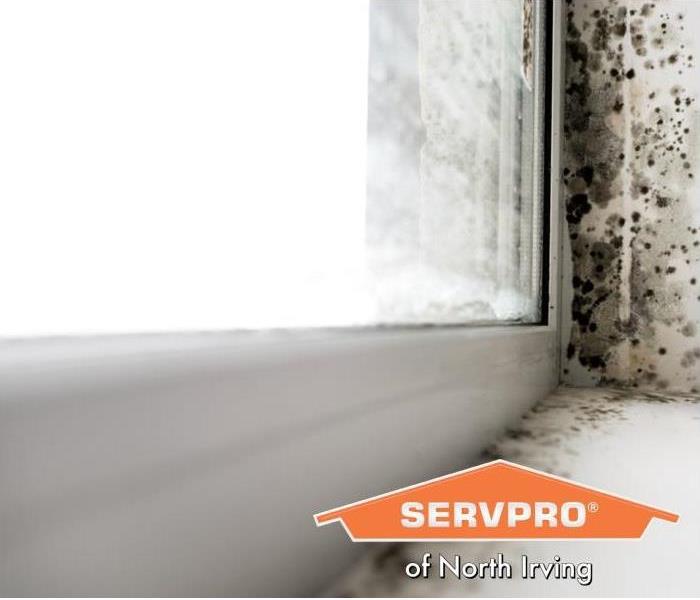Why You Need a Mold Remediation Company with Realistic Expectations
9/29/2021 (Permalink)
 For the best mold removal service in Dallas, call SERVPRO. Our experience ensures that you avoid the adverse effects of a moldy environment.
For the best mold removal service in Dallas, call SERVPRO. Our experience ensures that you avoid the adverse effects of a moldy environment.
Mold is a common consequence of water damage in a residential home or business premises. Mold forms when airborne mold spores land on wet surfaces and quickly reproduce, causing unsightly black or blue patches on walls, ceilings, floors, and soft furnishings. Mold remediation is crucial because the CDC reports that mold can cause health effects.
Suppose you must deal with mold growth in your property. In that case, it’s vital to get a trusted mold remediation contractor to resolve the problem for good. SERVPRO is a leader in the mold remediation industry, assisting Dallas residents in getting rid of mold in homes. We are available to help you 24/7 with mold cleanup or deal with a mold issue. Call us at (972) 986-7677 for a free estimate.
What to Expect with a Mold Remediation Company
Mold spreads incredibly fast in dark, damp, and cold conditions. Unfortunately, for the average homeowner, mold removal is exceptionally challenging. Using chemicals to clean mold can seem to remove the toxic spores and improve the appearance of your building. However, hidden mold can live in walls, under paint, and be found almost anywhere.
Mold remediation experts don’t just concentrate on removing moldy material. Instead, a professional mold remediator will remove toxic mold in homes at the source.
What services can you expect from a reputable mold remediation company in Dallas? A mold specialist is someone who removes, cleans, and sanitizes mold growth from surfaces. However, a thorough mold inspection must look for mold in hidden places. Only this way can you get rid of mold for good.
Here are the four steps in a mold remediation plan.
1. Mold assessment
The first step to remove the presence of mold is to assess the extent of mold damage and its source. Visible mold growth usually results from a water leak, high humidity, or mold growing in air ducts. The Texas Department of Licensing and Regulation says that humidity levels should be 50 percent or less to prevent mold.
Then, the mold specialists will develop a remediation plan outlining the scope of work involved. The plan should include strategies to ensure a return to acceptable mold levels and eliminate mold at its source.
2. Mold containment
The next step to eliminate mold from a building is to contain contaminated areas. Plastic sheeting will help prevent dead mold spores from contaminating other parts of the building. Additionally, air scrubbers can help clean the air and reduce levels of mold in the air.
3. Mold cleanup
Once the area has been contained, the cleanup will begin. Mold experts realize that cleaning mold is a sensitive process. Therefore, they will ensure that mold spores aren’t released into the air, where they can settle on other surfaces and grow again. In addition, they will thoroughly clean HVAC systems and replace filters to ensure the air is spore-free and improve indoor air quality.
4. Demolition and removal
Items that show signs of mold damage are removed or destroyed. This could be drywall, carpets, plywood, insulation, ceiling tiles, furniture, or porous materials. Any affected part of the structure that can’t be removed will be treated to prevent any moldy environment from developing in the future.
Because complete mold removal is a daunting task, it is best to leave it to the professionals. They can help identify sources of mold, eliminate mold for good, and give advice on mold prevention.
For a helpful and realistic mold remediation company in Dallas, give us a call.
For the best mold removal service in Dallas, call SERVPRO. Our expertise in mold removal and restoration services will ensure that you avoid the adverse health effects of living or working in a moldy environment. Call us day or night at (972) 986-7677 for a free estimate and effective mold remediation.






 24/7 Emergency Service
24/7 Emergency Service